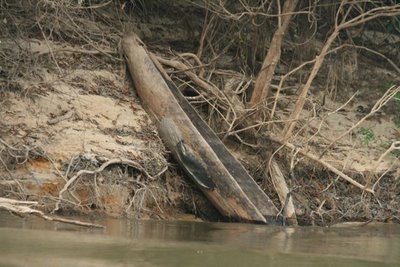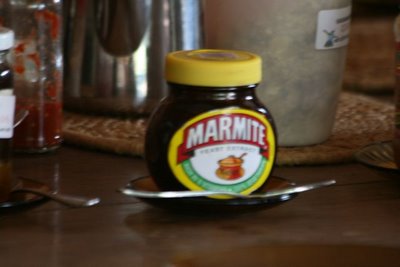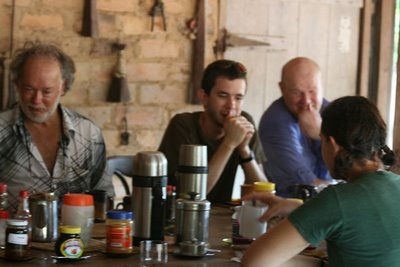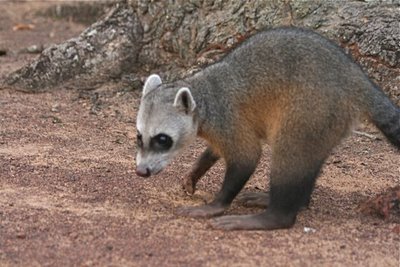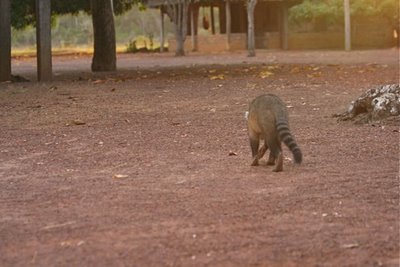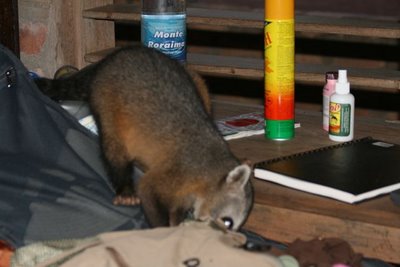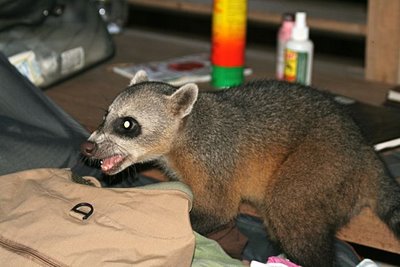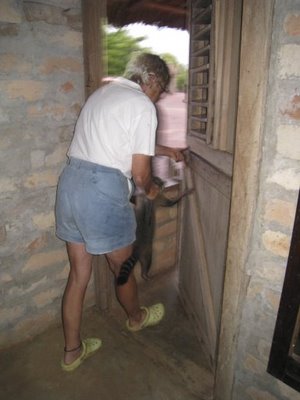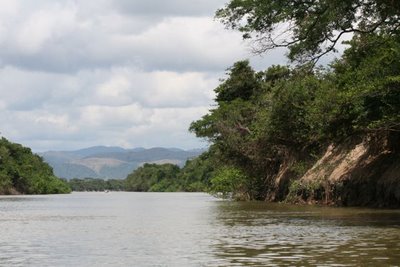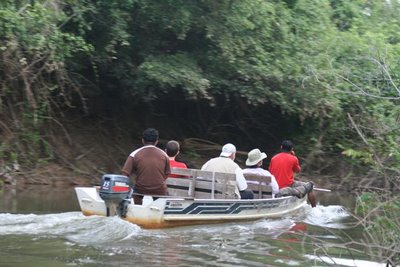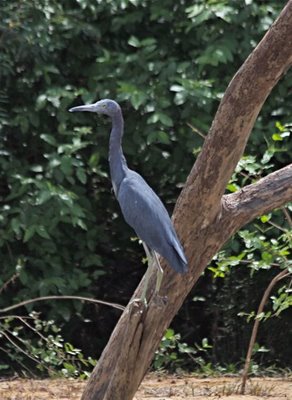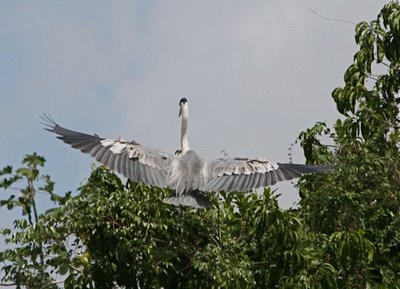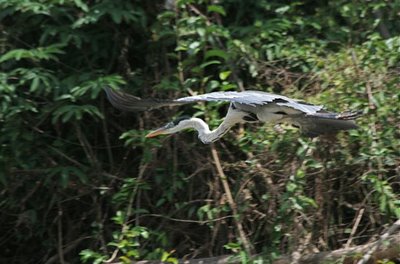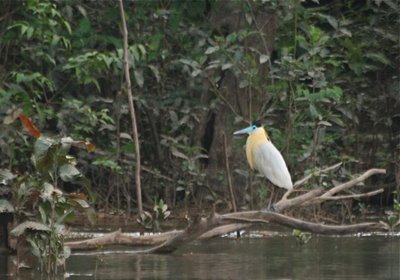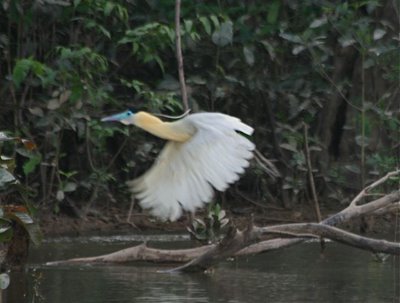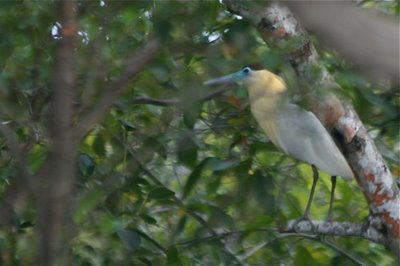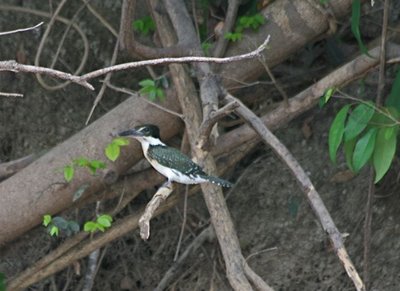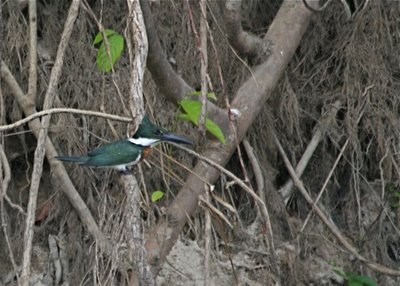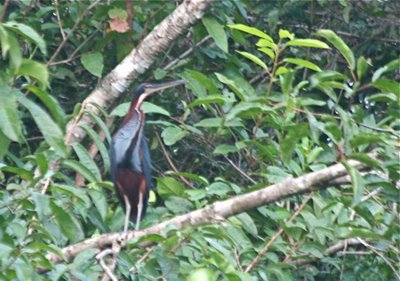Giant Amazon Otter: Hands, Lips, Eyes, and Fur
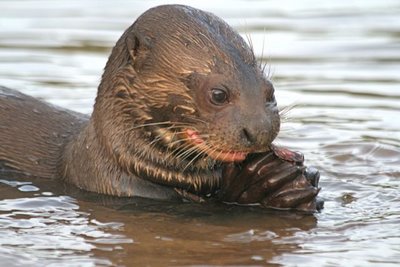 We're still lolling by the Rupununi River in Guyana, South America, ogling a giant otter. What gorgeous webbed feet and hands he had! I wanted to touch them.
We're still lolling by the Rupununi River in Guyana, South America, ogling a giant otter. What gorgeous webbed feet and hands he had! I wanted to touch them.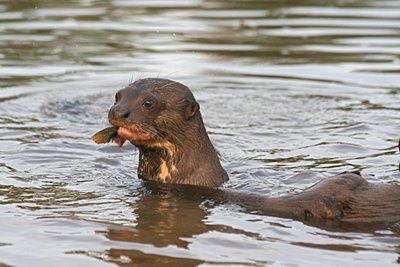 In this photo, you can see two of the distinguishing features of giant vs. river otter: the luscious pink lips of the giant otter, and the creamy markings on its throat. The giant otter's whitish throat bib is uniquely shaped in each individual, a wonderful mark for researchers wishing to study family groups. Sure beats having to catch and mark them!
In this photo, you can see two of the distinguishing features of giant vs. river otter: the luscious pink lips of the giant otter, and the creamy markings on its throat. The giant otter's whitish throat bib is uniquely shaped in each individual, a wonderful mark for researchers wishing to study family groups. Sure beats having to catch and mark them!The Neotropical river otter, below, has a diffuse grayish-white throat and less bodacious lips. I also noted that the giant otter has googly eyes, whose whites are often evident, and the Neotropical river otter does not. Pity. Googly eyes are Web magic.
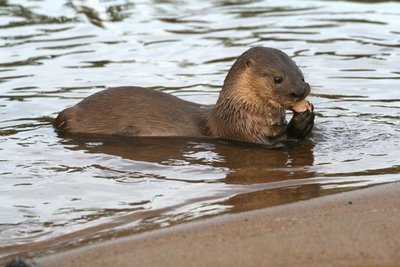 The Neotropical river otter got out of the water, while the giant otter stayed in, chewing on half a fish.
The Neotropical river otter got out of the water, while the giant otter stayed in, chewing on half a fish.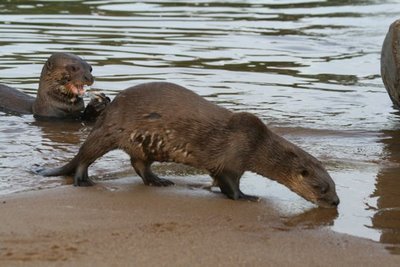 It was beginning to sink in on me that I was looking at two of the rarest mammals in the Amazon, probably rarer even than the giant anteater. Oddly, population estimates for giant otter (I couldn't get them for the Neotropical river otter) run somewhere below 5,000 individuals, just as they do for the anteater. I don't know how "they" arrive at that number, but it's the one I have. Giant otters have been horrifically persecuted for their satiny fur-the shortest otter fur going. Wikipedia states that between 1959 and 1969 Amazonian Brazil alone accounted for 1,000 to 3,000 giant otter pelts annually. Well, that ought to clean them out pretty quickly. One pelt could be worth a year's wages to a hunter. And for what? Furry collars and cuffs for ladies' coats? The species was so thoroughly decimated that the Brazilian population dropped to just 12 in 1971. It's a marvel that any remain. (Don't touch me right now; my eyes are glowing red).
It was beginning to sink in on me that I was looking at two of the rarest mammals in the Amazon, probably rarer even than the giant anteater. Oddly, population estimates for giant otter (I couldn't get them for the Neotropical river otter) run somewhere below 5,000 individuals, just as they do for the anteater. I don't know how "they" arrive at that number, but it's the one I have. Giant otters have been horrifically persecuted for their satiny fur-the shortest otter fur going. Wikipedia states that between 1959 and 1969 Amazonian Brazil alone accounted for 1,000 to 3,000 giant otter pelts annually. Well, that ought to clean them out pretty quickly. One pelt could be worth a year's wages to a hunter. And for what? Furry collars and cuffs for ladies' coats? The species was so thoroughly decimated that the Brazilian population dropped to just 12 in 1971. It's a marvel that any remain. (Don't touch me right now; my eyes are glowing red).
One thing that contributes to the otter's plight is its insatiable curiosity. Like a Science Chimp, giant otters just have to know. And so they bob up and periscope their long elegant necks and holler and squeal and goggle and stare at people in boats, sometimes even approaching them. Bad idea. There's a precedent for such behavior on the part of vanishing animals. Carolina parakeets would circle around a fallen flockmate, allowing shooters to take the whole flock.
There's some evidence, though, that giant otters as a species are finally beginning to grasp that human beings are not to be trusted, but still they all too easily fall prey to poachers and kidnappers who wish to keep them as pets. That's another bad idea, since giant otters are highly social, and depend completely on their family groups for contact, affection, and survival in the wild. Diane McTurk knows that better than anyone.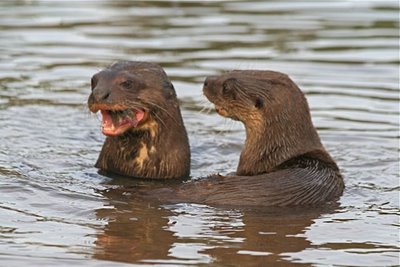
And so, though the Neotropical river otter is a solitary animal in the wild, this one (right) serves a mighty purpose in keeping the squally baby giant otter (left) company day in and day out. I've never seen a wild animal so attached both to its animal friend and its human caretakers. The giant otter squealed, caterwauled and complained constantly, trying to follow us as we departed by boat. It just seemed to want to be part of a larger group--any group. It's hard-wired to be this way, since giant otters live in family groups of 5-9 in the wild, consisting of a mated pair and perhaps two years' worth of offspring. The first time he squealed and swam after our boat, I almost wept, and then I realized that that is why he has a human caretaker and an otter friend--to keep him out of trouble until he can be socialized with other giant otters. Giant otter rehabilitation makes songbird rehab look like a walk in the park. My hat is off to Diane and her helpers.
Sorry about the weekend giant otter cliffhanger. A girl has to take some time off. But it is bad form to leave you wanting more ottritude for three whole days.
Next: Zick gets PERFORATED.
What? Are you surprised?
Labels: Giant amazon otter, Guyana, Guyana South America, Karanambu, Neotropical river otter, sociality in giant Amazon otters

